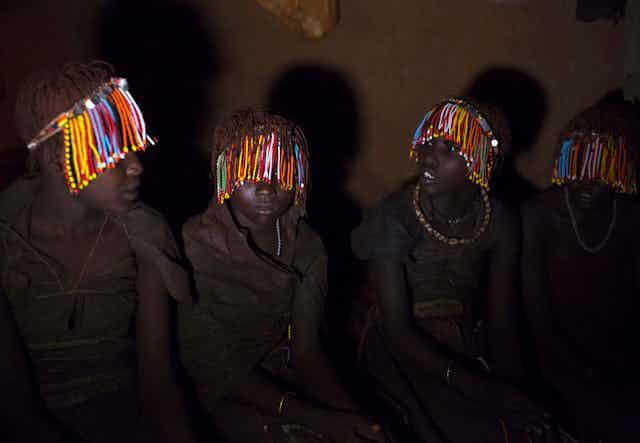International broadcaster BBC has released a gripping exposé about a Malawian man who explained how he initiates young girls into sexual activity as part of a rite of passage.
The man, informally known as a hyena, is alleged to be one of many in a southern Malawian community who are paid to perform the service. One of the most startling revelations is that, by his own admission, the man is living with HIV but does not use condoms when he has sex with these girls.
The report serves as a stark reminder of children’s extreme vulnerability.
Since the broadcast, Malawi’s President Peter Mutharika has spoken out against harmful cultural practices. The “hyena” has since been arrested. But the question remains: does taking on one hyena clean the ecosystem? What about the families, mothers, fathers and relatives who played a role?
The reality is that despite high levels of knowledge and information, communities still adhere to cultural practices which endanger their children.
Persistent traditions and cultural practices
The Malawian rite of passage is just one example where communal mores and norms are reinforced by communities. Several studies by UNICEF, UNAIDS and the Global Commission on HIV and the Law have shed light on African cultures and traditions associated with the human life cycle. These include initiation, birth and death rites; arranged marriages, female genital mutilation, circumcision and various iterations of cleansing rituals associated with the body and mind.
But some of these other cultural and ritual practices have come under scrutiny because they violate the health and rights of individuals. And in most cases it is children and women who bear the brunt.
This happens in many ways:
young girls are forced into early sexual debut and unprotected sex and are at risk of contracting HIV;
female genital mutilation causes health complications for girls and women around sexual health and pregnancy;
child marriages result in childbearing which often has negative effects on their health and the child they carry;
In settings of poverty, many of these children suffer from malnutrition. This complicates maternal and child health; and,
In the long term, many of these women have poor physiological and mental health outcomes.
In addition, these rituals are often transactional. Where there are high levels of poverty these children become a “resource”. They are transacted for money, food or other material goods. The main benefactors are adult males who seek to enhance their status or to get another wife. These men also look for labour or consider such girls a medical solution – some maladies are believed to need a young virgin “girl” for cleansing.
It has been shown that addressing the HIV epidemic in southern Africa is hampered by practices which place young people, particularly young women and girls, at risk of infection.
The question is why some of these cultural practices persist in the face of so much effort and interventions to highlight their negative impacts on individuals and communities. For example, three decades of HIV/AIDS and broader public health research has shown the link between unsafe ritual practices and human health and development.
Legal instruments only go so far
Several legal mechanisms have been put in place to tackle violence against children.
SADC leaders have approved a model law to ban child marriages and other forms of violence against children. They are also reviewing the SADC Gender Protocol which among other things prioritises the implementation of gender equality. Female genital mutilation and marriages involving children are banned in several African countries. But the practices continue.
At a regional level, the African Union has given significant attention to the issue of women’s empowerment. It has pronounced on gender based violence and child marriages as part of its Agenda 2063, the continental development road map.
There are also other international instruments like the UN Convention on the Rights of the Child, which most countries across the globe have signed up to. Several other high level international forums convened by United Nations agencies have similarly prioritised gender based violence and launched high profile initiatives to promote the safety and security of women and girls. One of their most recent initiatives is the #womenmatter (Africa) McKinsey report, launched by the Executive Director of UN Women Phumzile Mlambo-Ngcuka.
But the challenge is that none of these initiatives address the complicity and collusion of people, families and communities. Nor do they tackle how children and young people are silenced.
What more can be done?
Institutions that work with children and youth must be better equipped and protected in executing their mandate. Their work is too often hampered by mixed messages from communities and leaders
More laws are needed because many countries have dual or multiple legal systems where these practices are not criminal.
Political leaders must be less ambivalent about legal reforms which they believe irk their largely rural voters in whose backyards most of these cultural practices thrive.
There are several groups that need to engaged to tackle culture related violence on children.
Working with elders who are gatekeepers of culture and tradition is critical in navigating for firm and purposeful action.
Tackling silences and rituals protecting patriarchal impunity must also involve engaging cultural experts and practitioners.
Finding ways to engage children is also important. Often children are not listened to until harm has been done.
Africa must prioritise its youth if the development aspirations of the global Sustainable Development Goals 2030 and Agenda 2063 are to to be realised. Preserving African cultures and traditions is important. But it should not translate into a license for murder.

